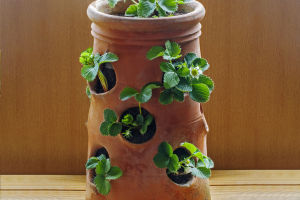When it comes to glaciers on the earth, for researchers, it is the most meaningful scenery. Because they can use glaciers to study what the earth was like before humans appeared. However, there are very few glacial relics preserved now.
On the edge of the glacier, there is a mysterious landscape hidden. No matter from the name or the scenery, it is one of the most beautiful scenery in the world, because it is often filled with endless mystery and fantasy. This is a mysterious cave called the Blue Ice Cave.
This most beautiful blue ice cave is in the southwest of Iceland. There is a glacier called Vatnajökull, which is the largest glacier in Europe. On the edge of this glacier, there are many thin and long ice tongues sliding down the mountain, and on the edge of these ice tongues, there are some ice caves, the largest of which is the blue ice cave.
In nature, ice is usually transparent and white, and it looks very crystal clear. However, through the reflection of sunlight, the ice caves formed by ice cubes are no longer white and transparent, but blue. This makes us have to sigh the magic of nature's ingenious workmanship.
Ice caves are a particularly natural phenomenon. Although it is created and nurtured by nature, it is fundamentally different from many geographical landscapes. This is because an indispensable factor for the formation of ice caves is the passage of time. In some places, it takes thousands of years to form ice caves. But in places where there are many glaciers, natural landscapes such as ice caves are more likely to exist and form. Because there is a lot of ice water at the bottom of the glacier that is melting at an accelerating rate, under the flow and impact of these waters, along with the increase in temperature, it is particularly easy to form ice caves. Because there is no artificial processing and no deliberate modification, the number of such landscapes is not uncommon. It is extremely easy to find on the edges of many glaciers.
As long as the sun is there, it will still be comfortable to wander around here for a few hours. When you reach your destination, you can choose to hike on the glacier. There are broken ice surfaces everywhere on the glacier. After walking on the ice for a while, you can sometimes hear the sound of the ice breaking. This is because the brittle layer on the ice surface is prone to fracture after being subjected to external pressure. But you don't have to worry about the ice surface collapsing, because the ice layer is frozen solid. You can also enter the blue ice cave and enjoy the blue ice world. The glacier will look bluer as the cloudy sky filters out some of the warm colors. This kind of blue is clear and pure, without a trace of impurities, it seems to be the cleanest place in the world, and it can wash away all the filth and distractions in the world.
Considering the hours of sunshine in Iceland, there are several times a day to visit the Blue Ice Caves, the most common being 10am and 2pm, and may extend to around 5pm in some months with longer sunshine. No matter what month it is, there will always be sunshine. However, if it is cloudy, it will naturally have a certain impact on the light.
One point that has to be mentioned here is that the existence period of the ice cave after its formation is also relatively short. Because under the change of temperature, the ice cave will collapse anytime and anywhere. Therefore, people who go to the ice cave to watch every year will have a special safety officer to explain the corresponding knowledge points before watching, or they will watch it under the guidance of relevant personnel.


